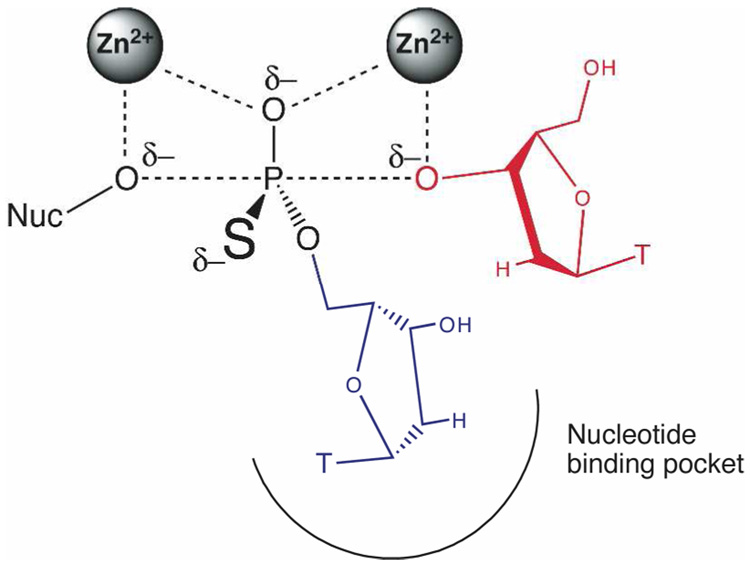Figure 5.
Model of the transition state arrangement for the Rp-TT dinucleotide. Hydrogen bonding patterns in AMP-bound crystal structure (Ref. 9) strongly suggest placement of the 3’ nucleotide (blue) within the nucleotide binding pocket, while the leaving group nucleotide (red) position is strongly suggested by the structure in complex with transition state analog vanadate (Ref. 9). This arrangement is further suggested by observed 3’ to 5’ nuclease activity of NPP (Ref. 9). Selectivity for Rp stereochemistry thus indicates that the sulfur atom is preferentially positioned as indicated in the figure by the large S. This is the expected result, as the Rp stereochemistry avoids placement of the larger sulfur atom between the Zn2+ atoms (31).

